Ever wondered why Dutch dog breeds are gaining so much attention lately? From their fascinating history to unique characteristics, Dutch dog breeds offer something special for every dog enthusiast and breeder. In this post, we’ll explore these delightful breeds in detail, provide tips on training and care, and show why they might be the perfect addition to your household.
Introduction to Dutch Dog Breeds
Dutch dogs are recognized for being historical and unique. They have been made to satisfy the particular requirements of their owners in various environments in which they live. Whether you need a faithful companion, a hardworking laborer, or just want a new furry friend, there is always an appropriate Dutch breed.
This post will, therefore, explore some characteristics and backgrounds of some popular Dutch dog breeds. Besides discussing practical tips on training these animals, this article explores ways to take care of them and keep them healthy so that they can grow strong.
Unique Features of Dutch Dog Breeds
Dutch dog breeds are known for their distinct characteristics, making them stand out not only in appearance but also in behavior and intelligence. Here are some unique traits of these breeds:
- Coat Types:
- Many Dutch breeds, like the Dutch Shepherd and the Kooikerhondje, have unique coat textures. The Dutch Shepherd, for example, has a double coat that can be long, short, or rough, providing excellent protection against harsh weather conditions.
- The Keeshond, another popular Dutch breed, is known for its luxurious, thick, and fluffy coat, which helped the breed thrive in cold Dutch winters as a companion and watchdog.
- Behavioral Traits:
- Dutch breeds are often intelligent, loyal, and highly trainable. The Dutch Shepherd is known for its versatility and ability to excel in various roles, from herding to search and rescue, thanks to its quick learning ability.
- The Schipperke, often described as curious and energetic, is known for its bold personality and high energy levels. This breed was originally used as a small guard dog and still retains a natural instinct for alerting its owners to any threats.
- Intelligence and Working Ability:
- Many Dutch breeds were originally bred for specific tasks, making them hardworking and smart. The Friesian Water Dog (or Stabyhoun) is a prime example of a versatile breed that excels in hunting, retrieving, and even herding. This breed’s intelligence and adaptability make it an excellent working companion.
- The Kooikerhondje, a smaller breed with a remarkable work ethic, was initially bred to lure ducks into traps. Its quick reflexes, keen intelligence, and excellent problem-solving abilities are standout features that make it a superb working dog.
- Social and Affectionate Nature:
- Dutch breeds, such as the Keeshond and Dutch Smoushond, are typically very affectionate and social dogs, forming close bonds with their families. These dogs were often bred to be companions and watchdogs, giving them a natural tendency to be loyal, protective, and family-oriented.
- Adaptability:
- Many Dutch breeds are highly adaptable to various living environments, whether in rural or urban settings. The Dutch Shepherd, for example, thrives in both working environments and as a family companion, showing how well these breeds can adjust to their surroundings.
Overview of Dutch Dog Breeds
Understanding Dutch dog breeds’ history and cultural significance enhances our appreciation of these incredible animals. These breeds have played vital roles in Dutch society, from guarding livestock to serving as loyal companions.
Knowing the unique traits of each breed helps potential owners make informed decisions. Each breed has its own set of characteristics, temperaments, and needs, making it essential to choose the right one for your lifestyle.
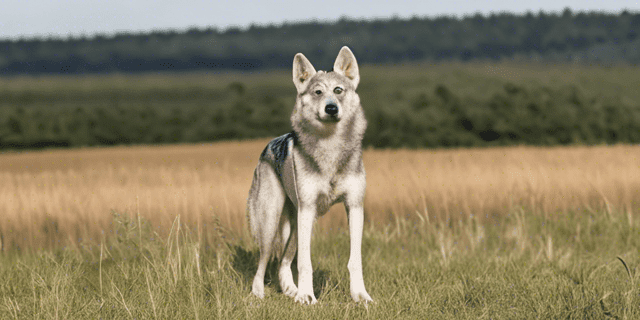
Saarloos Wolfdog
Origins and History
The Saarloos Wolfdog is a wolf crossed with a German Shepherd. In the 20th century, Leendert Saarloos in the Netherlands specially developed this breed to fuse the affection of a German Shepherd with the hardiness of a wolf.
Physical Characteristics
Saarloos Wolfdogs resemble wolves with their agouti coat pattern and striking appearance. They have a muscular build and a strong, agile frame, making them both beautiful and powerful.
Temperament and Behavior
These dogs are known for their skittish nature and tendency to avoid danger. They are social within their family circle but may be reserved around strangers. Saarloos Wolfdogs thrive in environments where they feel safe and are treated with respect.
Common Uses and Popularity
While they may not be suitable for all households, Saarloos Wolfdogs make excellent companion dogs for those who appreciate their wild nature. Their unique appearance and loyal temperament have made them popular among dog enthusiasts.
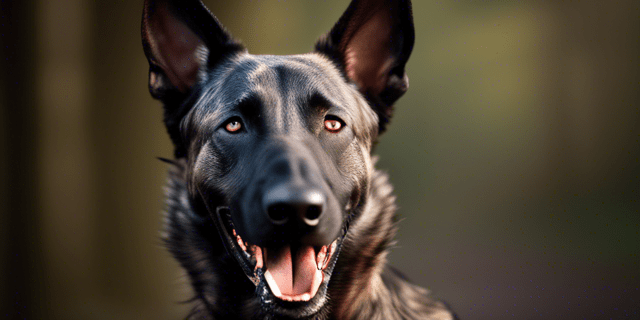
Dutch Shepherd
Origins and History
The Netherlands saw the development of the Dutch Shepherd as an all-purpose working dog. The breed has three types of coats: short-haired, long-haired, and rough-haired. The primary function of these dogs was herding and guarding livestock.
Physical Characteristics
Known for their distinctive brindle coat, Dutch Shepherds have strong, agile bodies and sharp, alert expressions. Their exceptional work ethic and physical prowess make them stand out among herding breeds.
Temperament and Behavior
Dutch Shepherds are intelligent, alert, and highly trainable. Their sharp instincts and loyalty make them excellent candidates for police, military, and search-and-rescue work.
Common Uses and Popularity
These dogs are popular among working dog circles for their reliability and versatility. Their intelligence and trainability make them a favorite for various roles beyond herding.
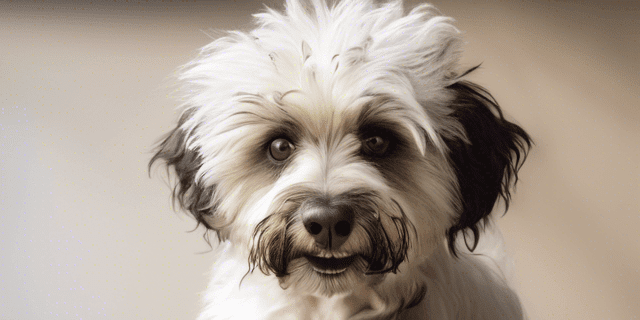
Schapendoes
Origins and History
The Schapendoes is a sheepdog from the Drenthe region, established in the 1800s. This breed was developed to assist shepherds in herding sheep.
Physical Characteristics
Schapendoes have a fuzzy, black-and-white coat and a cheerful appearance. Their medium-sized, sturdy build allows them to move with agility and grace.
Temperament and Behavior
These lively, social dogs make excellent family pets. Their playful nature and friendly disposition endear them to everyone they meet.
Common Uses and Popularity
Schapendoes are active companion breeds that excel in agility and obedience competitions. Their affectionate nature makes them popular family pets.

Kooikerhondje
Origins and History
The Kooikerhondje was originally used for duck hunting in the Netherlands. The breed’s name is derived from the Dutch word “kooiker,” referring to the duck decoy traps they helped set up.
Physical Characteristics
Kooikerhondjes have a red and white coat with dark sable hairs on their ear fringes. Their elegant appearance and small to medium size make them attractive and functional.
Temperament and Behavior
These dogs’ appearance is delicate, and they have their own lineages that make them grown-ups. On that note, they will become quite fond of you when you say hello because they always yearn for attention and companionship.
Common Uses and Popularity
Kooikerhondjes are popular in the Netherlands and abroad as companion dogs. Their hunting background also makes them adept at various canine sports.

Smoushond
Origins and History
The Smoushond was founded around 1900 and is known for its small, rough-haired appearance. This breed was developed in the Dutch lowlands and served as a rat catcher and companion.
Physical Characteristics
Smoushonds have a straw-colored coat and a small, robust build. Their rough, tousled appearance gives them a charming and unique look.
Temperament and Behavior
Friendly, cheerful, and calm, Smoushonds make excellent family pets. They are known for their easy-going nature and adaptability.
Common Uses and Popularity
While not as widespread as some other breeds, the Smoushond has a dedicated following. Their delightful personality ensures they remain beloved by their owners.

Stabyhoun
Origins and History
The Stabyhoun hails from the Frisia region and is known for its versatility as a farm dog. These dogs were used for various tasks, including hunting, guarding, and companionship.
Physical Characteristics
Stabyhouns typically have a black and white or chocolate and white coat. They are medium-sized with a balanced and sturdy build, making them suitable for various activities.
Temperament and Behavior
These lively, sensitive dogs are known for their hunting skills. They are excellent at ratting and retrieving, making them valuable farm dogs.
Common Uses and Popularity
Stabyhouns are becoming increasingly popular as companion dogs. Their versatility and amiable nature make them suitable for various activities and environments.
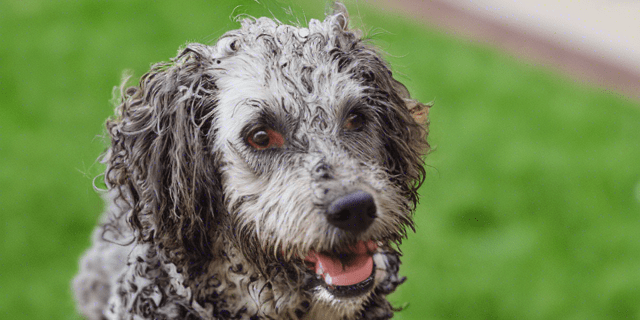
Wetterhoun
Origins and History
The Wetterhoun is closely related to the Stabyhoun but is stockier and has a curly coat. This breed originated in the Frisian region and was used for hunting and guarding.
Physical Characteristics
Wetterhouns have a curly coat that can be black, chocolate, or a combination of these colors with white. Their sturdy build and distinctive coat make them easily recognizable.
Temperament and Behavior
These dogs are sober, quiet, and serious, making them excellent guard dogs. They are loyal to their families and protective of their territory.
Common Uses and Popularity
While less popular than the Stabyhoun, Wetterhouns has about 1,000 individuals worldwide. Their guarding instincts make them valuable for those needing a reliable watchdog.
Drentse Patrijshond
Origins and History
The Drentse Patrijshond comes from the Drenthe region and is a versatile hunting dog. Bred for hunting various games, this breed has a storied history in the Netherlands.
Physical Characteristics
Drentse Patrijshonds has a chocolate and white coat, which is attractive and functional. Their medium-sized build makes them agile and capable hunters.
Temperament and Behavior
These dogs are outdoorsy and love being active. They are excellent at hunting and make loyal companions for those who enjoy outdoor activities.
Common Uses and Popularity
With a population of about 5,000, Drentse Patrijshonds are a popular Dutch breed. Their versatility and hunting skills make them highly valued in their homeland and beyond.
Markiesje
Origins and History
The Markiesje is the newest Dutch breed, developed as a toy companion dog. Despite its recent development, this breed has quickly gained popularity for its charming looks and personality.
Physical Characteristics
Markiesjes have a black or black and white coat, with an elegant and athletic build. Their small size and graceful appearance make them ideal companion dogs.
Temperament and Behavior
These dogs are cheerful and not demanding, making them easy to care for. Their friendly nature and adaptability make them great pets for various households.
Common Uses and Popularity
Markiesjes are becoming increasingly popular as companion dogs. Their delightful personalities ensure that they are well-loved by their owners.
Training Tips for Dutch Dog Breeds
Basic Obedience Training
Training is essential for any dog, and Dutch breeds are no exception. To ensure success, tailor your training methods to each breed’s temperament. Consistency and patience are key.
Specialized Training
Specialized training can help working and hunting breeds excel. Focus on developing their natural abilities and providing ample opportunities to use their skills.
Socialization Methods
Proper socialization of Dutch breeds is essential. They must be exposed to different environments, people, and other animals to become well-adjusted and confident.
Health and Care Tips
Regular Veterinary Check-ups
Each breed has specific health needs, so regular vet visits are essential. Keep up with vaccinations, dental care, and any breed-specific health issues.
Nutrition Plans
Ensuring a personalized nutrition plan has been scientifically proven to be important for both working and active dogs. You should make sure their diet is well-balanced. This will provide them with energy and improve their health prospects in general.
Grooming Requirements
Different coat types require different grooming routines. Regular brushing, bathing, and trimming will keep your dog’s coat healthy and looking its best.
Exercise Needs
“Because of the backgrounds of Dutch breeds, their exercise requirements differ. To ensure that they remain healthy and happy, you must provide them with enough physical as well as mental activity.”
Conclusion
Dutch dog breeds offer a unique blend of history, functionality, and charm. Selecting the right breed for your lifestyle is crucial to ensuring a happy and fulfilling relationship with your canine companion.
Investing time in training and caring for your Dutch dog will enhance your bond and ensure they thrive. Please share your experiences and follow us for more tips and guides on Dutch dog breeds!
By understanding and appreciating the characteristics of Dutch dog breeds, you can make informed decisions and enjoy the many benefits these wonderful dogs offer.
Frequently Asked Questions
What is the lifespan of Dutch dog breeds?
Most Dutch dog breeds live between 12 and 15 years, depending on the breed and some personal health elements. To enhance their quality of life and prolong their age, they must receive regular veterinary attention, eat balanced meals, and observe appropriate physical activity levels.
Are Dutch dog breeds good with children?
Yeah, many Dutch dog breeds have the reputation of being social and sweet-tempered, making them good mates for families with kids. Nevertheless, it is wise to supervise conversations between dogs and young kids to protect both sides.
How much exercise do Dutch breeds need?
The exercise needs of Dutch dog breeds can vary greatly, mostly depending on their background and specific breed characteristics. Working and hunting breeds like the Drentse Patrijshond require more vigorous exercise, while companion breeds like the Markiesje may be satisfied with regular walks and playtime.
Do Dutch dog breeds require special grooming?
Grooming requirements also vary among Dutch dog breeds. Wetterhouns, with their curly coats, need regular brushing to prevent matting, while smooth-coated Stabyhouns may require less frequent grooming. Always consider your breed’s specific grooming needs to keep them looking and feeling their best.
Are Dutch dog breeds easy to train?
All Dutch dog breeds have high levels of intelligence and eagerness to satisfy their owners, so training them can be easy. However, every breed has distinct qualities, making it necessary to adjust your training style for each one. Success relies on consistency with positive reinforcement and patience.
Sarah Smith is a passionate dog and cat enthusiast, blogger, and pet care expert. With years of experience researching and writing about various dog breeds cat breeds, she brings a wealth of knowledge and insight to her blog, PetPession.com. Sarah loves exploring the unique traits, histories, and care needs of different breeds, helping pet owners make informed decisions. Her mission is to create helpful, friendly, and well-researched content that both educates and celebrates the joy of pet ownership. When she’s not writing, Sarah enjoys outdoor adventures with her own furry friends.

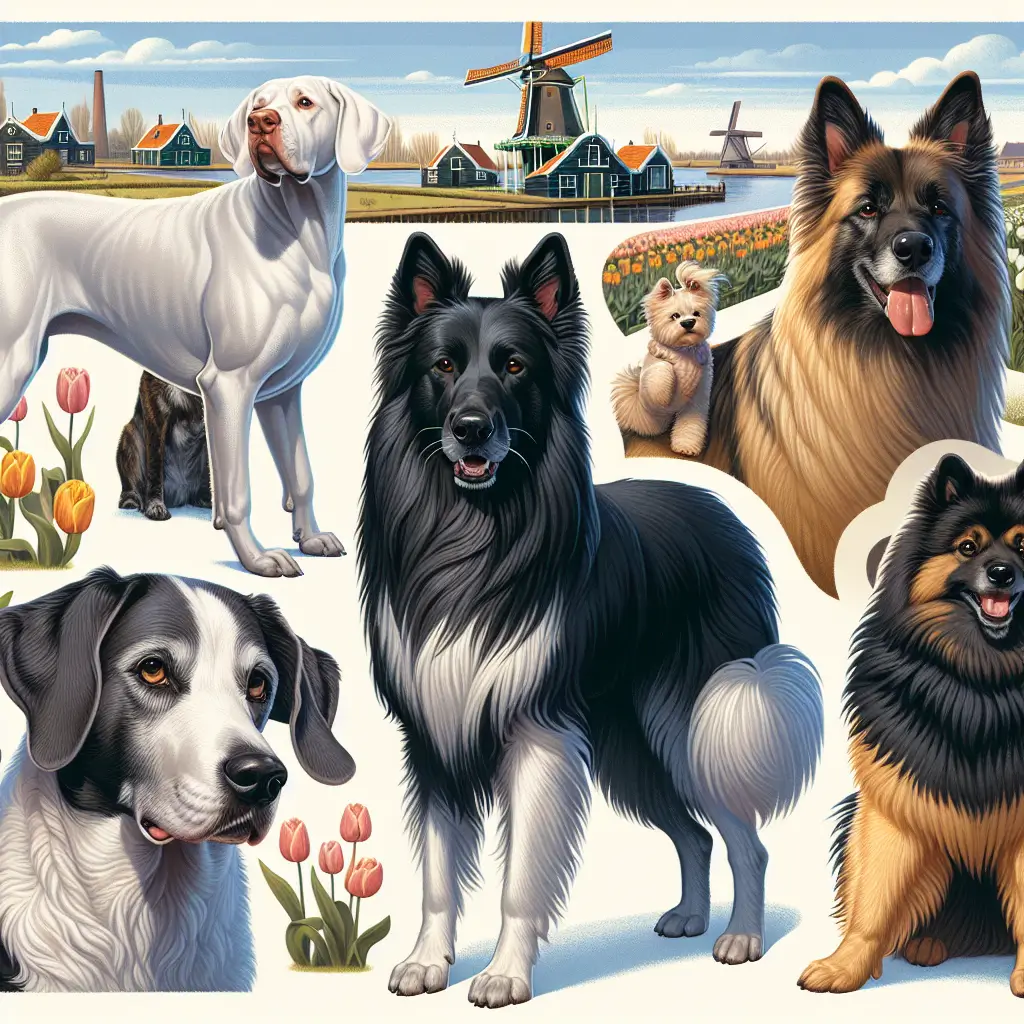
1 thought on “Discovering Dutch Dog Breeds”